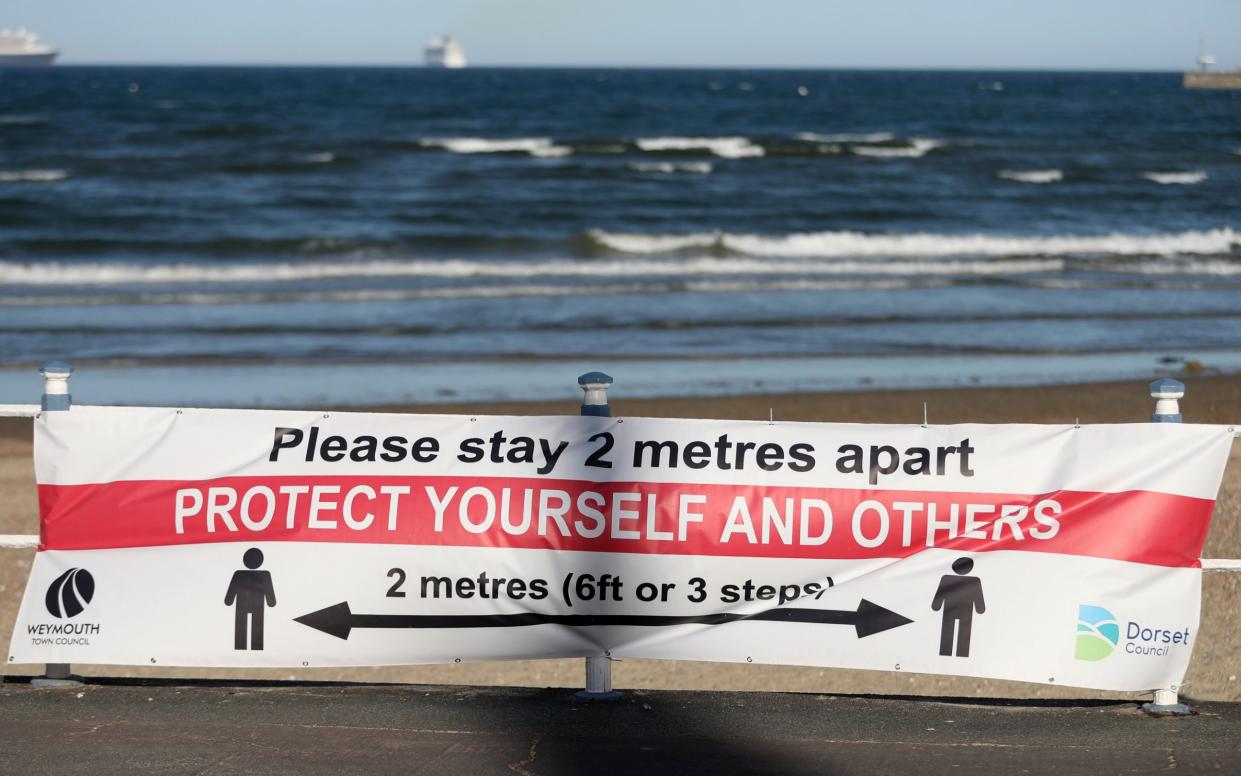Fewer than one in 1,000 now infected with coronavirus in England each day


Coronavirus infections in the community have more than halved in a week, data from the Office for National Statistics (ONS) has shown.
Last week, surveillance testing by the ONS suggested there were around 133,000 people infected at any given time between May 11 and May 24, amounting to 0.24 per cent of the population.
But the latest data shows that dropped to 53,000 between May 17 and May 30 – a fall of 60 per cent.
The chance of catching the virus in the community is now thought to be very low, with just one in 1,000 people now testing positive on any given day.
The overall reproduction 'R' number for the UK remains between 0.7 and 0.9, and between 0.7 and one for England, although there is regional variation.
But Government scientists believe that figure is "artificially high" because it includes care homes and hospitals, where the chance of picking up an infection is much higher.

Experts are also concerned that community transmission is being seeded from care homes and hospitals by care and social workers.
Cases in care homes peaked weeks later than they did in the community, and there are still high death rates among residents. Likewise, Government health experts have warned that many virus cases are being caught in hospitals by patients who are recovering from other conditions.
New papers released by the Government's Scientific Advisory Group for Emergencies (Sage) show that, as early as April 4, there had been 226 coronavirus cases linked to hospital outbreaks, and the situation is believed to have worsened since then.
A senior Government advisor said the overall picture was that "community transmission is down", but warned: "We've still got this issue in hospitals and care homes.
"This hospital and care home reseeding back into the community is keeping the 'R' rate artificially high."
The new ONS figures suggest there were 39,000 new infections per week between April 26 and May 30, equating to an incidence rate per week of 0.07 new cases per 100 people.
It means the number of people infected with the virus in England has fallen to around 5,600 new infections a day from around 8,000 reported last week, fewer than one in 1,000.
The latest ONS data is based on swab tests of 19,000 people in 9,000 households across the country. It does not include hospital and care home data, so is likely to be an underestimation of the total infections.
However, the ONS said "modelling of the trend over time shows evidence that the number of people in England testing positive has decreased in recent weeks".
Keith Neal, emeritus professor of the epidemiology of infectious diseases at the University of Nottingham, said: "The rate of infection continues to decline and is half what it was two weeks ago. Changes over a longer period are now statistically significant.
"This is highly compatible with the fall in diagnosed cases. The contact tracing service has more than enough staff to cope with the current level of infection."
Yet there are fears that the easing of the lockdown is causing the 'R' number to rise again and some areas may be above one, meaning the virus will continue to increase.
New modelling from Public Health England (PHE) and Cambridge University shows that the 'R' rate is now slightly above one in the north-west of England and at one in the south-west.
Last month, the same modelling showed that London’s 'R' rate had fallen to 0.4 and there were just 24 cases per day in the capital. But the number has now jumped to 0.95, with 1,310 daily infections.
The PHE model estimates that there are now 16,700 infections daily, far higher than the ONS data, but it includes care homes and hospitals.
Dr Paul Birrell, one of the modellers from the Medical Research Council (MRC) Biostatistics Unit at Cambridge, said: "ONS is a sample of households not including care homes and sampling of long-term hospital occupants and, given that we see the bulk of deaths occur in over-75s, there is a strong possibility that this would add a significant bias to the estimates.
"I am sure their numbers would increase if they were able to sample care homes."
Dr Yvonne Doyle, PHE's medical director, said the lifting of lockdown measures meant it was likely that the number would increase and urged members of the public to continue with social distancing measures and washing their hands.
"Our estimates show that the regional 'R' numbers have increased, although they remain below one for most of England – this is to be expected as we gradually move out of lockdown," she said.
"It is vital that everyone continues with social distancing, practising good hand hygiene and must remain at home and order a test if they have symptoms."
Commenting on the new figures, Kevin McConway, emeritus professor of applied statistics at the Open University, said the results were hopeful but did not yet pick up any changes associated with lifting some lockdown restrictions.
"The end of the period for which ONS now has data, May 30, does include a time when some loosening of the lockdown had occurred," he said. "That's very encouraging.
"But there has been more loosening since with, for example, the reopening of some schools on June 1. We'll see in future weeks."


